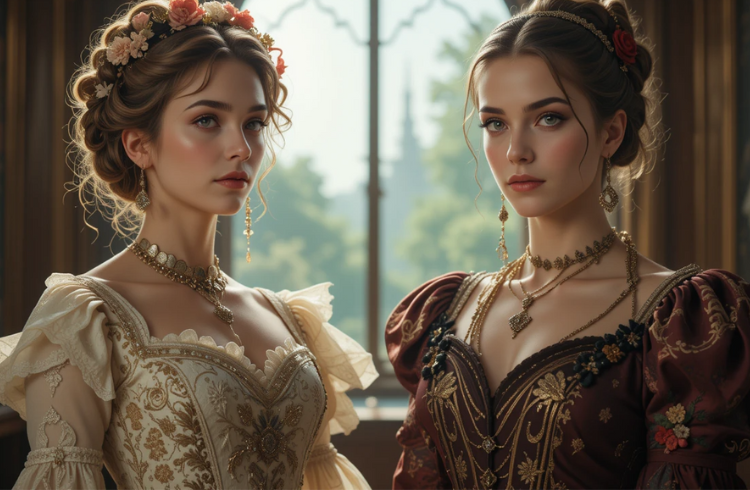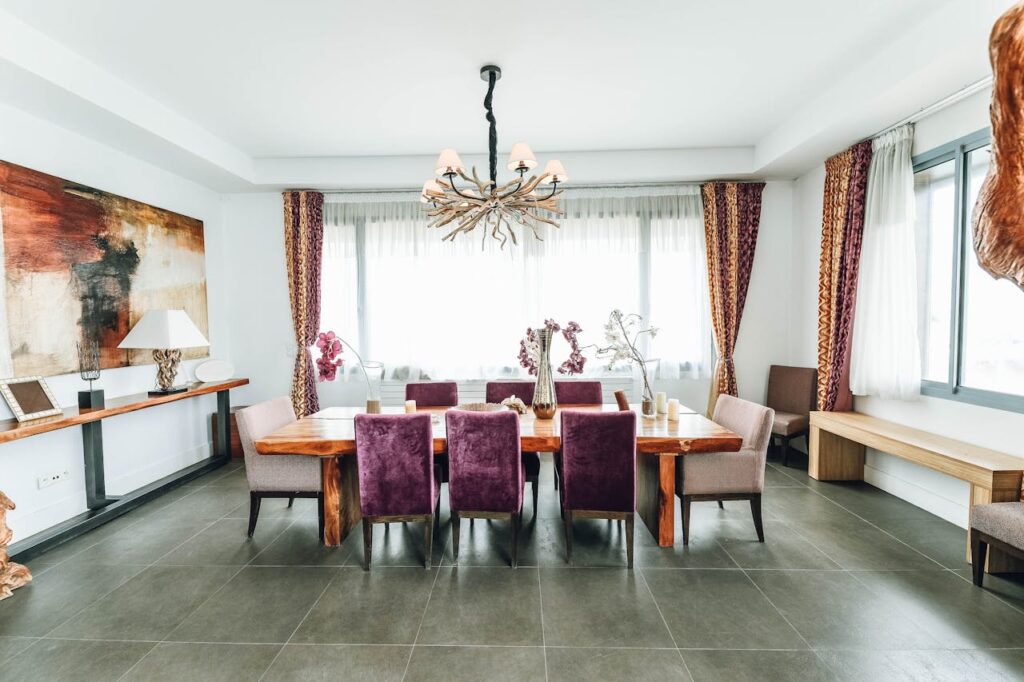Introduction
The Gilded Age, which evokes images of opulence and extravagance, marked a transformative period in American history from the late 19th century to the early 20th century. This era was characterized by dramatic economic growth, industrialization, and a burgeoning middle class that sought to emulate the lifestyles of the wealthy elite.
Central to this period was Gilded Age fashion, a reflection of societal changes and the rise of haute couture, luxury trends, and social expectations. This article explores the intricate relationship between fashion, wealth, and social dynamics during the Gilded Age, highlighting how clothing became a powerful symbol of status and identity.
| Category | Details |
| Period | 1870s–1900s |
| Key Fashion Trends | Corsets, bustles, high-necked dresses, tailored suits, elaborate hats, gloves, and luxurious fabrics. |
| Women’s Fashion | Hourglass silhouettes, embroidered gowns, puffed sleeves, lace details, and evening gowns with dramatic trains. |
| Men’s Fashion | Three-piece suits, morning coats, tailcoats, cravats, and top hats. |
| Haute Couture | European designers like Charles Frederick Worth influenced American high society. Custom-made gowns became the standard for wealthy women. |
| Luxury Fabrics | Silk, velvet, brocade, and lace were popular among the elite. |
| Social Class Impact | Fashion symbolizes wealth and status. The elite set strict dress codes for various occasions. |
| Accessories | Gloves, hats, pearl necklaces, parasols, walking canes, and pocket watches were essential to complete outfits. |
| Evolution Over Time | Bustles faded in the 1890s, and S-bend corsets created a more natural silhouette. More practical yet stylish outfits emerged towards the end of the era. |
| Legacy in Modern Fashion | Designers today draw inspiration from Gilded Age elegance, seen in red carpet gowns and high fashion collections. |
The Historical Context of the Gilded Age Fashion
The Gilded Age, roughly from the 1870s to the early 1900s, was a time of significant change in America. Following the Civil War, the nation experienced rapid industrialization and urbanization, leading to the emergence of a new affluent class.
This era saw the rise of railroads, factories, and large-scale enterprises, resulting in unprecedented wealth for some individuals. However, this wealth was often accompanied by stark social inequalities, prompting a desire among the newly wealthy to signal their status through fashion and lifestyle choices.

Economic Growth and Its Impact on Fashion
The economic boom of the Gilded Age created a culture obsessed with wealth and status. The newly affluent sought to distinguish themselves from the working class and the established elite. Fashion became a critical means of expressing this distinction.
As industrialization advanced, clothing production shifted from handcrafting to mass production, making fashionable items more accessible. However, the elite still favoured bespoke garments crafted from luxurious materials and designed to fit perfectly, highlighting the importance of individuality and exclusivity.
The Rise of Haute Couture
Definition and Origins
Haute couture, which translates to “high sewing,” refers to creating exclusive, custom-fitted clothing from high-quality materials. This concept gained prominence during the Gilded Age, particularly in Paris, which became the epicentre of fashion innovation. The first official haute couture house was established by Charles Frederick Worth in the mid-19th century.
Influential Designers of the Gilded Age
Several designers emerged during the Gilded Age who left a lasting impact on haute couture:
- Charles Frederick Worth: Often regarded as the father of haute couture, Worth’s creations were sought after by the elite, including royalty and socialites. He pioneered the concept of fashion shows, showcasing his designs to a select audience.
- Paul Poiret: A revolutionary designer, Poiret rejected the corseted silhouette that dominated the previous era. He introduced more fluid lines and exotic influences, allowing women greater freedom of movement.
- Jacques Doucet: Known for his romantic and feminine designs, Doucet’s work incorporated luxurious fabrics and intricate embellishments, appealing to the tastes of wealthy women.
These designers shaped the aesthetics of Gilded Age fashion and influenced social expectations regarding femininity and elegance.
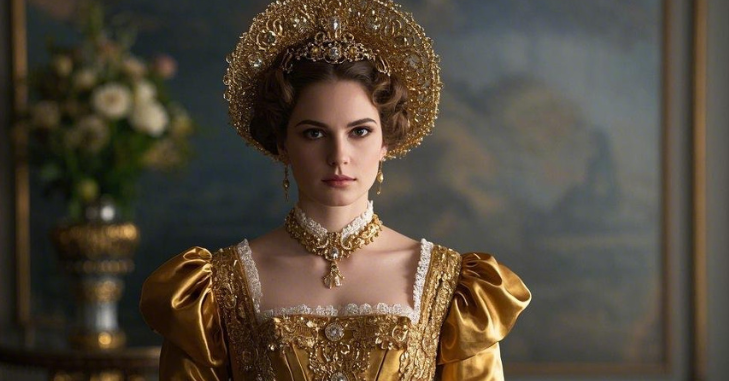
Luxury Trends in Gilded Age Fashion
Materials and Fabrics
The use of sumptuous materials defined luxury in Gilded Age fashion. Silks, velvets, lace, and brocade adorned the gowns of the elite. Fabrics were often imported from Europe, underscoring the global nature of fashion during this period. These rich textures and vibrant colours were designed to dazzle and impress, making a statement about the wearer’s wealth and sophistication.
Accessories and Adornments
Accessories played a vital role in completing the Gilded Age ensemble. Women adorned themselves with extravagant jewellery, including diamond brooches, pearl necklaces, and gold bracelets. Feathered hats, gloves, and fans further emphasized their status. The opulence of these accessories complemented the gowns and served as additional indicators of wealth.
The Influence of Social Events
Social events such as balls, galas, and soirées provided the perfect stage for displaying Gilded Age fashion. The lavish gatherings of the upper class became opportunities for women to showcase their exquisite gowns and elaborate accessories.
The competition to outdo one another in fashion became a defining aspect of social life. Fashion magazines of the time, such as Harper’s Bazaar and Vogue, documented these events, further fueling the public’s obsession with luxury trends.
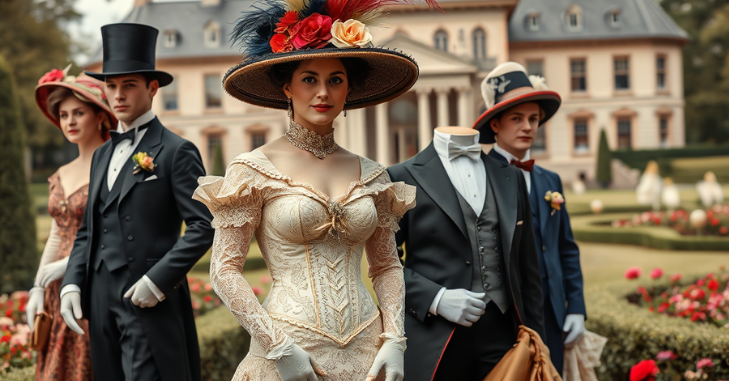
Social Expectations and the Role of Fashion
Fashion as a Social Identifier
During the Gilded Age, clothing was not merely a matter of personal style; it was an influential social identifier. The wealthy elite used fashion to signify their place in society, often adhering to strict dress codes that reflected their status. The concept of “appropriate” attire for various social occasions became crucial, dictating what was suitable for different events.
The Corset and Feminine Ideals
The corset epitomized the restrictive nature of Gilded Age fashion. It was a garment and a symbol of the era’s ideals of femininity. The tightly laced waist was meant to create an hourglass figure, embodying the societal expectation of women as delicate and ornamental.
The Role of the “New Woman”
As the Gilded Age progressed, the emergence of the “New Woman” challenged traditional notions of femininity. Educated and independent, these women sought to break free from societal constraints. Fashion began to reflect this shift, with designers like Paul Poiret leading the way in creating more practical and comfortable clothing.
The Impact of Fashion on Society
Class Distinctions and Fashion
Fashion during the Gilded Age served to reinforce class distinctions. The wealthy elite showcased their status through exclusive garments, while the emerging middle class aspired to emulate their style.
This aspiration led to the rise of department stores and ready-to-wear clothing, making fashionable attire more accessible. However, the distinction between haute couture and mass-produced garments remained significant, with the elite prioritizing exclusivity.
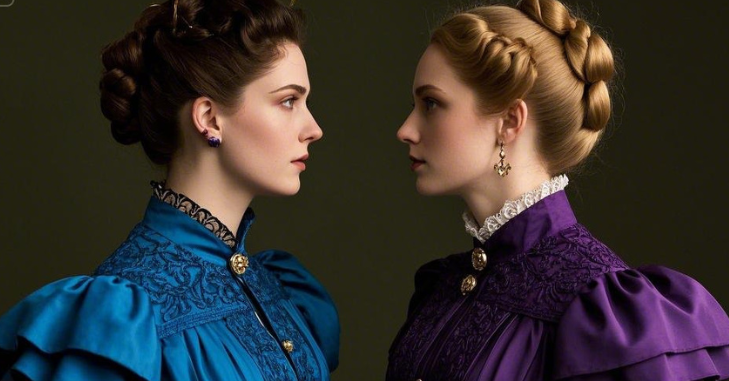
The Role of Fashion Magazines
Fashion magazines were crucial in shaping societal perceptions of clothing and beauty. Publications like Harper’s Bazaar and Vogue provided insight into the latest trends and showcased the lavish lifestyles of the wealthy. These magazines influenced consumer behaviour and reinforced the notion that fashion was integral to social status.
The Legacy of Gilded Age Fashion
The Gilded Age laid the groundwork for the modern fashion industry, establishing principles of haute couture and luxury that continue to influence designers today. The emphasis on craftsmanship, exclusivity, and social identity remains relevant in contemporary fashion.
Conclusion
The Gilded Age was a pivotal period in the evolution of fashion, marked by the rise of haute couture, luxury trends, and the intricate interplay between clothing and social expectations. Gilded Age fashion reflected not only the wealth and opulence of the elite but also the changing dynamics of society.
As individuals navigated their identities through clothing, fashion became a powerful tool for self-expression and social distinction. The legacy of this era continues to resonate in today’s fashion landscape, where the interplay of luxury, individuality, and social influence remains as relevant as ever.
Understanding the complexities of Gilded Age fashion allows us to appreciate the historical context that shaped modern fashion and the ongoing dialogue between society and style.
Apart from that if you want to know about “Wedding Hairstyles for Long Hairs: Elegant Updos, Romantic Curls, and Chic Braided Looks for Every Bride” then please visit our “Fashion” Category.
FAQs
Fashion was a powerful indicator of social class, with the wealthy elite using luxurious materials and bespoke garments to distinguish themselves from the emerging middle class, who sought to emulate their style.
The Gilded Age refers to a period in American history from the late 19th century to the early 20th century, characterized by rapid economic growth, industrialization, and the emergence of a wealthy elite.
Key designers included Charles Frederick Worth, Paul Poiret, and Jacques Doucet, each contributing to the evolution of fashion with unique styles and innovations.
Haute couture refers to high-end, custom-fitted clothing made from luxurious materials. It became prominent during the Gilded Age, particularly in Paris, where designers like Charles Frederick Worth established it.

